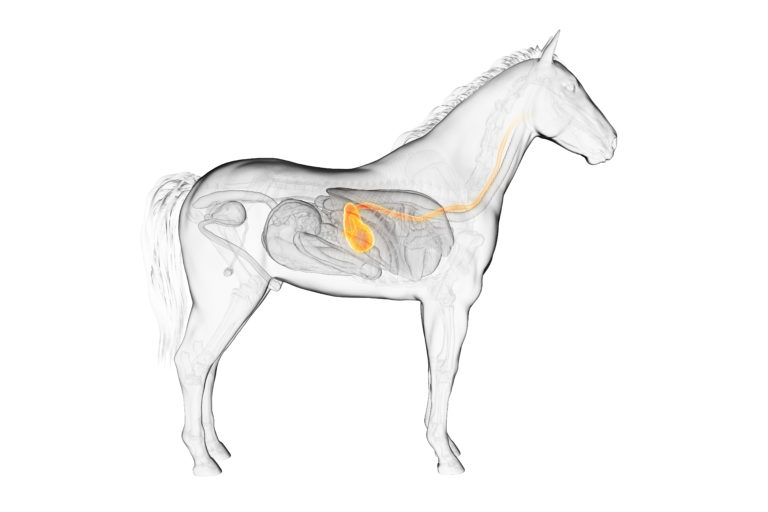
The stomach
A horse’s stomach has a capacity for 8 to 15ℓ in volume – quite small if you consider the size of an adult horse.
This isn’t a problem in nature, however, as horses are trickle feeders, and therefore are designed to digest small amounts of food all day round.
But with domestication, we now expect the horse’s digestive system to process two to three big meals of grain per day, with little roughage in between.
This creates issues as the horse’s stomach is found to work best when it is ¾ full.
The feed that reaches the stomach is broken down with pepsin, an enzyme responsible for digesting proteins, and hydrochloric acid, which breaks down the more solid foods into smaller pieces.
Anatomy
The stomach itself is divided into three areas: the saccus caecus, fundic and pyloric regions.
The saccus caecus region is the first region food enters from the oesophagus. As the food enters, hydrochloric acid and pepsin start to break down the proteins.
In addition, the carbohydrate component of the feed continues to break down to release soluble sugars for absorption and the process of bacterial fermentation, which produces lactic acid and gas, begins.
However, as the food starts to mix with the hydrochloric acid, the pH level drops and fermentation slows down.
Fermentation has to stop because if it continues unchecked, the stomach will quickly fill with gas, which can’t easily be released through the oesophagus.
If pressure builds up, the horse could colic or the stomach could rupture.
The feed then moves to the fundic region of the stomach. pH levels drop to around 5.4 and fermentation processes stop completely.
Pepsin and stomach acids start to further digest and break down fats and proteins.
Finally, the food moves to the pyloric region of the stomach, where the stomach joins the small intestine.
At this point of digestion, pH levels are around 2.6 (very acidic), so no fermentation occurs.
Protein digestive activity in this area of the stomach is 15 to 20 times higher than that found in the fundic region, as the enzymes work best at this pH.

Why should we always keep our horses’ stomachs full?
Feeding practices today often result in a horse being fed two or three big meals and standing with an empty stomach in between.
The stomach naturally produces acid, which mixes with the feed and saliva when the horse is feeding.
When the stomach is empty, the acid has nothing to mix with and so it destroys the cells of the saccus caecus region of the stomach – leading to ulcers of the stomach lining.
The majority of Thoroughbreds will suffer from stomach ulcers due to the fact that they are on high concentrate diets with little to no roughage in between meals.
Ideally, horses should be fed higher ratios of roughage than concentrated meals, and should be allowed to graze continuously throughout the day.
Overnight, horses should be fed enough grass in their stable to last until the morning.
